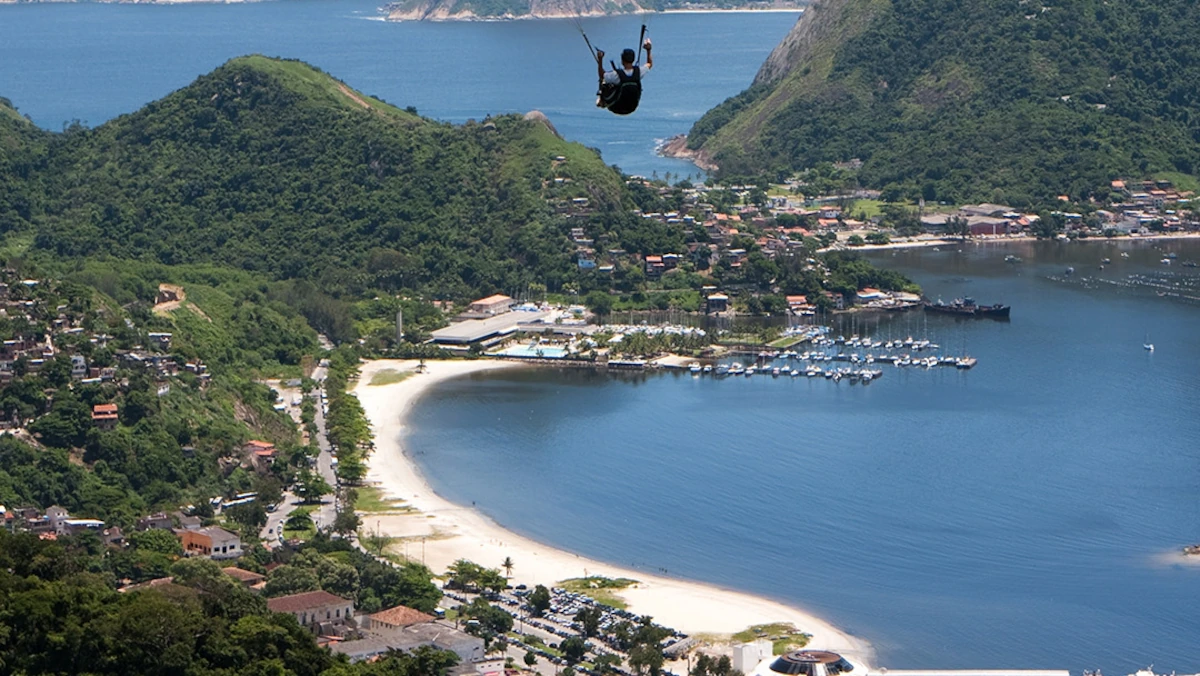Copyright National Geographic

Why join a standard walking tour when there are plenty of novel ways to experience a city, and plenty of ways to indulge a niche interest? Visitors can get uncover New York’s musical history by diving into its punk scene; learn about the Cold War by driving a Trabant through Berlin; and get a unique perspective of Rio by paragliding above it. Find a secret railway line in Paris The City of Lights shone brighter than ever last summer with its hosting of the Olympics — however, it also has a dark periphery that relatively few tourists seek out. The Petite Ceinture was a railway line with its origins in the mid-19th century. Abandoned since the 1980s, large sections have now been converted into official parks where you can wander among urban foxes and street art, venture into cavernous tunnels or find yourself enveloped by thick woodland in the centre of Paris. Some of the best sections are to be found south of the Seine — tread the old track bed on a mile-long stretch in the 15th Arrondissement, looking out for an abandoned station as you go. Drive a Trabant in Berlin Citizens of the GDR had to wait months, if not years, for their Trabants to be delivered: you, however, can get one with the mere click of a mouse, albeit to borrow for an hour or two. Take a time-hop back to the chilliest days of the Cold War on a Berlin Trabant safari, seeing the city as motorists might have done when the Wall was one piece of masonry. Self-driven tours provide you with insights into East Berlin’s 20th-century history — Trabis vroom in convoy down Karl Marx Allee and past the colourful murals of the East Side Gallery. Best of all, they come in stylish array of colours: from leopard print and zebra hide to classic GDR beige. Take a punk rock tour of the East Village New York City has gifted countless genres of music to the world: Harlem gave us jazz, the Bronx gave us hip hop — and then there’s the East Village, where some of the first chords of punk rock were played. Set out on a musical adventure in this Manhattan neighbourhood to discover its musical past — guided tours follow in the rebellious footsteps of Iggy Pop, New York Dolls and others, with participants learning how the subculture thrived as 1970s New York was beset by crime waves and the city plunged into near-bankruptcy. Among the key locations is the site of ‘CBGB & OMFUG’, a little club whose name stands for ‘Country, Bluegrass, Blues, and Other Music For Uplifting Gourmandizers’ — counterintuitively, it was the birthplace of punk after first opening in 1973, hosting bands such as the Ramones and Blondie. Go paragliding over Rio Rio de Janeiro is a city of vantage points — from the soapstone feet of the Christ the Redeemer statue that watches over the bay or from the cable-car that rattles up to the peak of Sugarloaf. None, however, quite compare with the experience of paragliding over the urban sprawl, with grand boulevards, steep favelas and the hallowed sands of Ipanema and Copacabana far beneath your toes. Tandem paragliding tours depart from the slopes of Pedra Bonita, set amid the forests of the Tijuca National Park. Accomplished pilots will be with you to ride the thermals, find a landing spot and generally do all the hard work. All that remains is for you to stretch out your arms like that immortal statue up on the hill. Drink port under the Bridges of Porto Porto is the city that gave part of its name to Portugal, and — perhaps more significantly — to port, the fortified wine which is stored and matured in its shadowy waterfront warehouses. Set out on a port-inspired voyage by catching a boat along the Douro — the wide, fjord-like river along which port barrels were ferried in ages past, tasting varieties of the fortified wine as the city’s steep and sublime scenery rolls past. The boat passes countless azulejo-swathed townhouses, but the drama levels up as you pass under immense bridges: among them the soaring skeleton of the Maria Pia Bridge, designed by Gustave Eiffel, and the Ponte da Arrábida — the last span before the river spills out into the Atlantic. To get even closer to the latter, ramp up the adventure a notch by ascending its 213ft-high concrete arch on a bridge climb. Savour Tbilisi’s gastronomy Tbilisi’s status as a refuelling station on the Silk Road endowed it with a wealth of culinary heritage — with spices and herbs, recipes and techniques travelling here from both East Asia and the Mediterranean. Sample some of this gastronomy on a day-long food adventure in the Georgian capital. Begin with a mouthful of matsoni — traditional Georgian yoghurt — before moving on to khinkali — traditional dumplings, which, an uncertain legend says, were brought to the Caucasus as one of the more benign side effects of the Mongol invasions. You’ll also try tea in an Azeri teahouse, feast on traditional pickles and walnut spreads — but the greatest treasure in the national store cupboard is the wine. Georgia is home to one of the world’s oldest winemaking traditions, in business since the sixth millennia BCE — go easy on the stuff, especially before treading the cobbled streets of Old Tbilisi. Kayak your way around Birmingham It’s an oft repeated fact that Birmingham has more miles of canals than Venice — whether or not there’s anything in the West Midlands to rival the splendour of the Rialto Bridge or a sunset bellini over the Giudecca is less clear. Nonetheless — unlike in Venice — you’re at liberty to kayak around all of Birmingham’s canals, with guided tours departing from the Roundhouse, a former stable building where merchandise was once unloaded from barges. Casting off on an easy-going three-mile odyssey, kayakers get a different perspective on the second city: paddling past civic landmarks like the Cube, the Mailbox and the International Convention Centre, all rising imposingly from the waterline.



